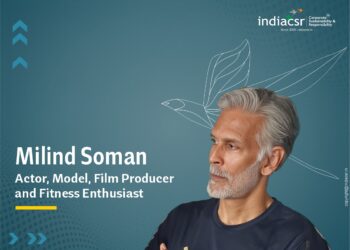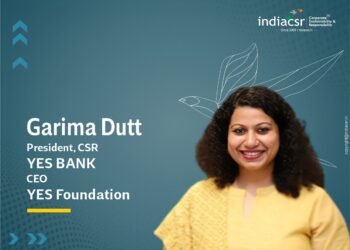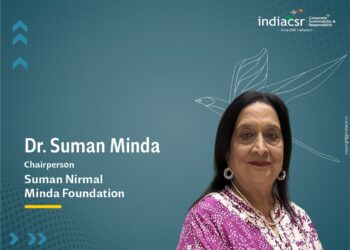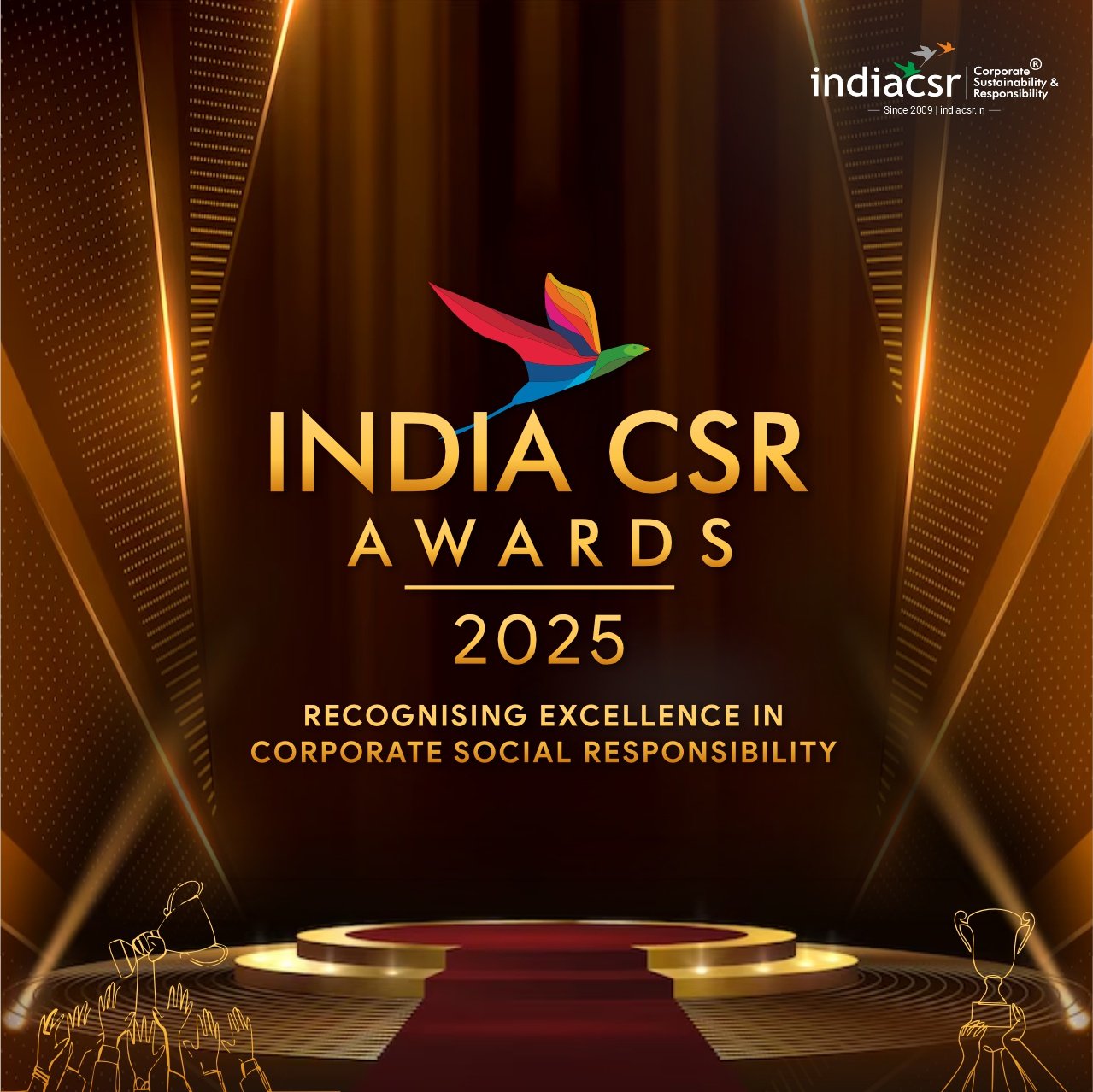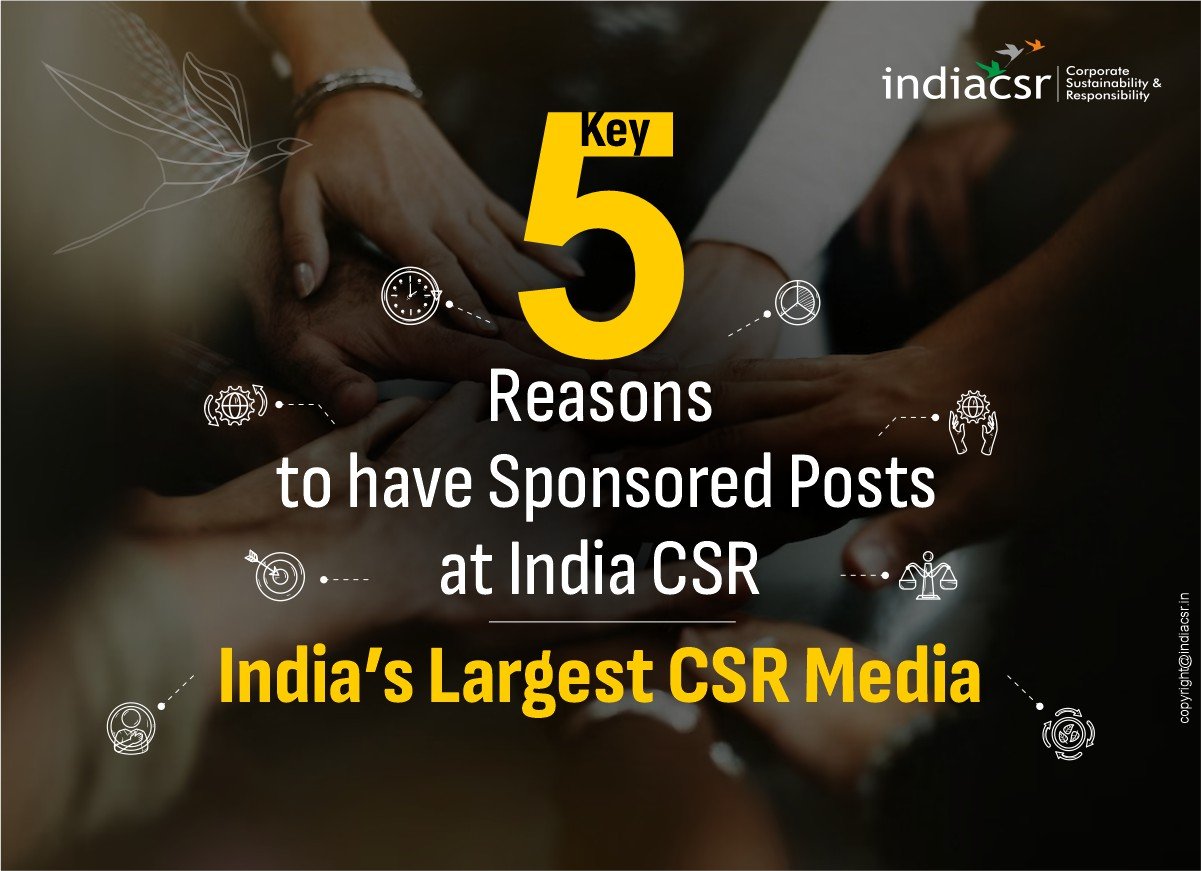Interview of Aravind Sitaraman, President – Inclusive Growth, Cisco Systems
Words Rusen Kumar
BANGALORE (India CSR): Aravind Sitaraman is the President – Inclusive Growth at Cisco Systems. Aravind is a Computer Scientist with over 27 years of work experience. After pioneering work in several startup & high-tech companies, he became one of the leading inventors in Cisco Systems with 57 patents. He served on the Board of Studies of Anna University and has led & been part of several international standards bodies.
He led Cisco India’s CSR efforts and launched several successful programs including ‘Feed-a-Child’ and ‘Adopt-a-School.’ Leveraging his experience rehabilitating tsunami victims in South India, he championed flood relief efforts in Karnataka in 2009. Aravind created Project Samudaya, a volunteer-led program, to enable villages through technology & build 3323 homes, 1 hospital, & 2 schools. Aravind morphed this project into a vehicle to deliver inclusive growth worldwide. In October 2010, he was appointed President, Inclusive Growth.
In an interview with Rusen Kumar, Editor, INDIACSR, Aravind Sitaraman, President – Inclusive Growth, Cisco Systems, shares his views on Cisco Inclusive Growth initiatives and recent development in CSR in the country. He said, “Inclusive growth describes the growth of populations that are not part of mainstream economy. It presupposes that economic growth is a crucial component for poverty alleviation and therefore leads to broad based transformation of a nation.”
Excerpts:
Brief us about the CSR initiatives of Cisco.
Cisco has been actively involved in CSR projects – especially in areas that bring about societal change through use of technology. Cisco has always been amongst the first corporations to respond to humanitarian disasters. In the past, it has participated in relief activities that include the earthquake in Sichuan, China in 2008, Hurricane Katrina in the United States in 2005, and the Indian Ocean Tsunami in 2004. In 2009, in response to unprecedented floods in Karnataka, Cisco made a $10 million grant for relief work through Project Samudaya. While we work with several NGOs that partner with us for our CSR activities, Samudaya was an entirely Cisco volunteer-run program that was executed with great precision.
What are the sustainability and social projects by Cisco India?
As new cities are being built and populated there is a constant threat to build sustainable societies. Countries like India where 70 % population live in rural and remote areas, arises a need to create inclusive growth by providing urban essential services and bringing these population into the mainstream economy. Our Inclusive Growth agenda aims to bridge the urban-rural divide using technology as the key enabler. It aims to integrate the non-enabled population into the mainstream economy helping them to leapfrog into development by driving the agenda of economic inclusion and enable access to basic, affordable amenities such as education, healthcare, access to a marketplace and public services.
“Inclusive growth is not a CSR program but does bring the latest technology to under-served populations at very affordable prices.”
We also have many volunteer-led programs that use technology to impart livelihood skills to fringe populations. For example, using the Cisco Education Enabled Development (CEED) platform, volunteers trained retiring soldiers of the Indian Army and orphaned children in an NGO in basic computer and networking concepts. Most of those who were trained by the volunteers have already received job offers.
Apart from these initiatives, Cisco is making a conscious effort to create a sustainable drive for our business. One of our key sustainability initiatives are Building 15 & 16 in our campus that are LEED certified. We are performing above LEED standards saving above 25% of lighting energy; more than 25% of water consumption; more than 30% for cooling energy in addition to enhancing air quality by 30%.
You are leader for Project Samudaya, how the project is serving the community?
Project Samudaya is Cisco’s commitment to use technology to help rehabilitate the villages that were destroyed during the 2009 floods in Karnataka. Cisco pledged to donate over 3223 houses along with two schools and a primary healthcare centre. The schools and the primary healthcare centre are connected to remote teachers and doctors using Cisco’s technology. This allows them access to the basic amenities for which, previously, they had to travel for miles. We have so far treated thousands of patients and provide quality education to several hundred children. In the process, we have saved several lives, protected the livelihoods of several people, and provided a glimmer of hope to hundreds of children. Cisco’s technologies allowed us to help the villagers of Raichur not only to get back on their feet but look at a much brighter future.
What started as a CSR project today has now become an affordable business model through the Inclusive Growth Business Unit. It is an example for all stakeholders to see how technology enablement can bridge the rural –urban gap and create more growth for a country like India which has 70% of its population living in rural areas.
Cisco has taken a lead in PPP in Karnataka, could you give a rundown on the activities?
In August 2010, Cisco announced phase 1 of the project and handed over 500 houses at N.Malkapur and Khataknur villages to the chief minister of Karnataka. We also inaugurated a remote healthcare service in the existing primary healthcare centre and tied up with volunteer doctors from a specialty hospital in Bangalore to deliver specialist healthcare to the area. Our education initiative – Cisco Education Enabled Solution (CEED) was deployed to help children in remote villages connect with top qualified teachers from city schools and NGOs, via internet.
In January, 2011, Cisco conducted a ground breaking ceremony of two schools at Bichali and Talamarivillages of Raichur. We also handed over additional 500 houses across four villages in Raichur – Khataknur, Chikkamanchal, Bichali and Thalmari, to the chief minister of Karnataka.
In July 2011, Cisco announced its handing over of more than 700 houses to the Government of Karnataka to mark completion of Phase III of “Project Samudaya” – – an initiative to collaborate with the government in their Asare program towards helping rehabilitate the lives of flood-affected communities in Karnataka.
The IVth and the concluding phase of “Project Samaudaya” took place on November 19, 2011, we handed over 1200 houses to the Government of Karnataka in Bichali village of Raichur. In total we have provided around 3223 houses to the villagers affected by the flood.
In the V phase, we will be handing over the two schools to the GoKA by the end of March 2013.
What are the various ongoing sustainability programmes in Cisco?
As explained earlier, Inclusive Growth was designed as a means to evolve CSR to be a sustainable model to bring amenities that are not available to disenfranchised populations through technology. The Samudaya model is now a sustainable business for Cisco and brings great value to the citizens and governments.
What do you think of India government emphasis on CSR?
As a nation, India faces paradoxes and polarities. As a developing nation, India has to find a way to use the vastly lopsided resources for the benefit of under-served populations without creating vast budget deficits through subsidies. The route of subsidy will irreversibly alter the macro-economic stability of this nation. While Inclusive Growth must be the center-piece of the nation’s development agenda, it must also be on a path that does not dilute the Indian economy story.
Some policy makers think that they can easily get the private sector to pay more money through a mandatory Corporate Social Responsibility (CSR) requirement. After a lot of push back from the industry, a new industry-recommended policy is now being introduced where a percentage of a company’s profits will be spent as CSR.
Unfortunately, many companies view this is an opportunity to use this percentage for employee welfare. Therefore, the definition of CSR needs to be tightened to ensure that this recommendation does not end up being a hidden tax or a way for companies to hide their welfare expenses and get a tax break in the process.
Indian culture is probably the only one in the world that defines giving back into two forms: one where the giver does not get back anything in return (Dhaanam) and another where the giver gets something in return (Dharmum). Obviously the first is held in higher esteem the second. In a clear sign of retrospective arrogance, we have ignorantly embraced the second form as the ultimate model since that is the only model the west pushes.
CSR if done well, can not only benefit the ultimate beneficiary, it also helps the giver and the society to embrace the nation and those who are left out of the mainstream. It helps the society harmonize through a simple act of giving and receiving and develop into a glorious nation.
Why sustainability issues are becoming more crucial for the organization?
CSR can only take the society to a certain point. It cannot forevermore be the solution to all issues facing the nation. Hence, any solution we embrace must be affordable as well as sustainable. Imagine if we had a model where CSR programs can be available for all to participate, does not greatly increase government fiscal burden, and at the same time increase benefit to the masses without the attendant corruption. That is exactly what we have built with our inclusive growth business unit.
What are the Corporate Social Responsibility guidelines and reporting standards followed by Cisco, does Cisco believe in 3rd party assurance on Sustainability report?
Cisco in general has a regimented CSR process and an even more well-established means of performance. Cisco corporate provides over-arching guidelines and volunteers deliver the projects that they are most passionate about. While 3rd reportage have become desirable and acceptable in many quarters, the quantum of money spent to have another party understand the project, study it, and deliver a report is oftentimes more than the project itself. Therefore, in many ways, we have become victims of what some self-serving organizations have painted a role for themselves as success parameters. However, given the reality, it would be useful if there is a report generated by a University or an NGO as opposed to a consulting company as it would be truly independent and very cost-effective.
Being a Sustainability leader, According to you, what are the recent sustainability trends in India?
India is slowly waking up to the concept of getting good work to a sustainable level. In the last 2 decades, a spate of NGOs did some amazing work;these usually die when the founder of the NGO dies. With increased inflow of those with corporate backgrounds into NGOs, often to find fulfillment in their lives, the orientation of NGOs isskewed more towards sustainability. However, policy and citizen participation are still lagging.
CSR has positive impact on overall development of organization. Do you think of CSR need to be integrated into the heart of business policy and strategy?
The new policy reinforces CSR’s importance to organizations. CSR appears in many guises – corporate social responsibility, sustainability, corporate responsibility, business ethics, corporate citizenship, and the environment and society. Its component parts can also vary; right from its most basic level it represents good business practice. In addition to helping society, organizations want to see some benefits for themselves.
For the most successful and effective corporations, CSR is now a major consideration of overall strategic planning. CSR draws key stakeholders to the organization when they see an important part of themselves reflected in the organization’s CSR efforts. It affects many aspects of the corporation’s life: its people, consumers, suppliers and investors. As many organisations do not realise the importance of CSR, implementing these practices will ensure responsible and socially aware corporations are ahead of the curve. Knowledge is no longer power; responsibility is.
Cisco’s CSR has room to evolve. Currently, the push is predominantly driven by disasters and reactive in nature. It would very useful to create a framework where Cisco’s participation to change the way people work, live, play, and learn is proactive. For example, most of the content on the Internet is in English while most of the people in the world do not read English. Can Cisco sponsor a volunteer-led effort to create vernacular content to reach the majority of the world? There are countless other projects that can happen with minimal financial investment and maximum volunteer participation.
How will you define the Inclusive Growth in the competitive context?
Inclusive growth describes the growth of populations that are not part of mainstream economy. It presupposes that economic growth is a crucial component for poverty alleviation and therefore leads to broad based transformation of a nation. In emerging countries, economic growth is often lop-sided and organic trickle down benefits take an inordinately long time to the larger population. Hence, inorganic means are required to accelerate the elevation of capabilities of the population to integrate and partake in the overall economic development. This is where we differentiate ourselves by leveraging the power of the network to enable inclusive development. This approach creates economic, political, and social stability and further accelerates the growth of the nation.
You are in core management team of Cisco-, which are the projects initiated by you under Sustainability Project?
Project Samudaya is a corporate social responsibility (CSR) initiative, which I have spearheaded aimed towards relief efforts for the devastating floods hit Karnataka in 2009. The project is a public-private partnership program, using the advanced networking technology to provide urban amenities to the rural communities. Project Samudaya provides affordable quality healthcare, education and housing to the rural areas of the state in accordance with Cisco’s vision of changing the way people work, live, play and learn. Cisco has helped rehabilitate the flood hit villages, by providing around 3223 houses to the villagers affected by the flood. Samudaya recently concluded the fourth and final phase of handing over the houses to the flood struck villages in Karnataka, along with two schools and one primary healthcare centre equipped with the state of the art facility.
Taking forward the success of Project Samudaya we initiated a holistic community development program through the Inclusive Growth agenda at Cisco. Through this project remote education has been successfully delivered to about 500,000 student hours in 9 schools and 4 hostels in 3 districts in Karnataka – Raichur, shimoga, and Hoskote. Currently 10 Primary Healthcare Centres have been set up in 3 districts of Karnataka – Raichur, shimoga and Chitradurga and over 35,000 consultations have been conducted successfully.In the specialty ocational skills development network in Kerala, we have conducted 17443 student of training in 34 Industrial training centers spread over 14 districts.
Recently, I have kicked off a new initiative through which volunteers can create curriculum content in vernacular languages for children in India. My dream is to expand this program to include all knowledge workers of the world to create vernacular content for all countries of the world.
Last year, recognizing my (and Cisco’s) contribution to rehabilitate flood victims and the Inclusive growth initiative across India, Karnakata conferred on meits highest civilian decoration, Kannada Rajyotsava award.
In your opinion, what CSR steps should Indian companies take to be at par with international level?
India is expected to have the largest youth population in world for the foreseeable future. Given the global footprint already achieved by Indian companies and their level of knowledge workers, they can easily show the way to the rest of the world on scaling and adapting. Many Indian companies already do a lot of CSR, but unfortunately do not talk about. As a corollary, many international companies do very little CSR but talk a lot of it. There needs to be a healthy mix of both.
You may also like:
- Be a Change Agent, Join Himalayan Yuva Prerna Yatra: Anil Jaggi, Founder President, SFID
- Canon Has Always Been Encouraging Employees to Volunteers Time for CSR Causes: CEO of Canon India Kazutada Kobayashi
- Education is The Key to Lead a Dignified Life: Santanu Mishra,Co-Founder & ExecutiveTrustee, Smile Foundation
- Interview with Niyati Sareen, GM-Corporate Responsibility (CSR) ,Hindustan Construction
- We Need to Integrate Responsible Attitude and Social Obligation With Core Agenda of Business: Rakesh Khare, Head CSR, THDC







